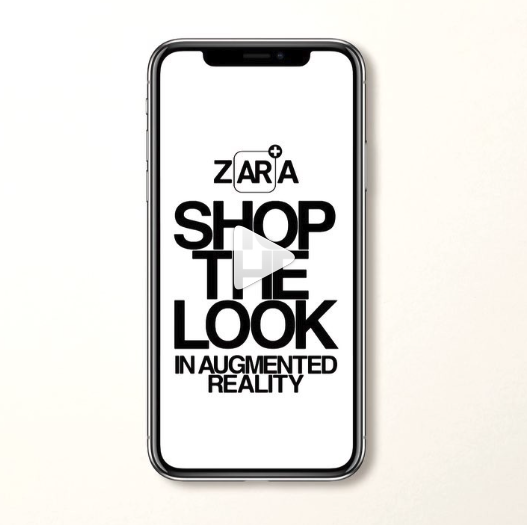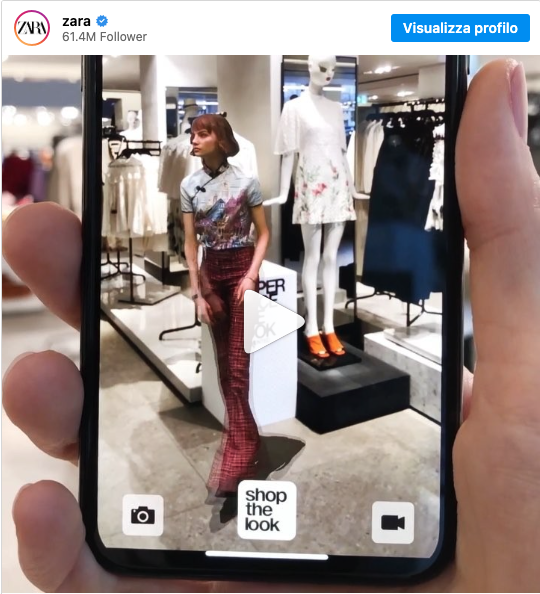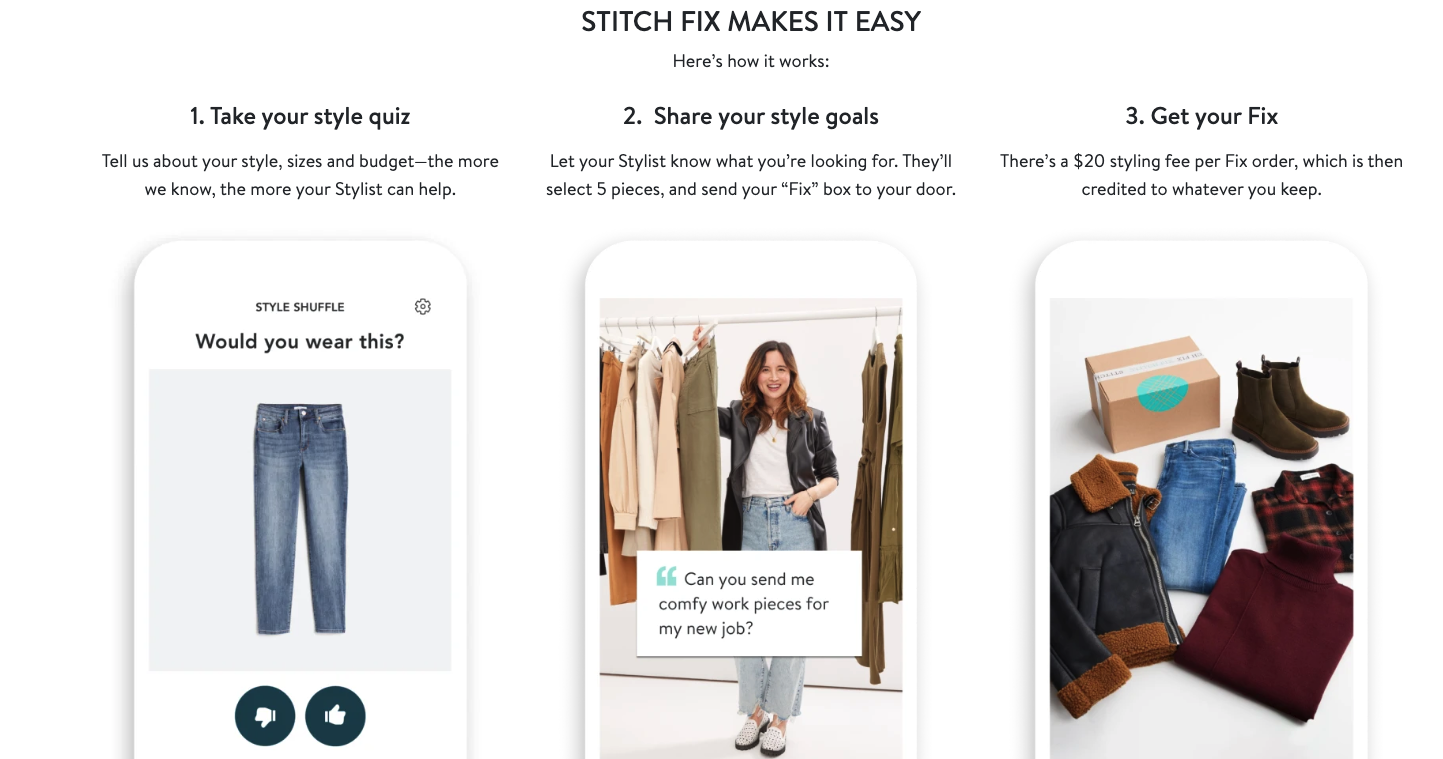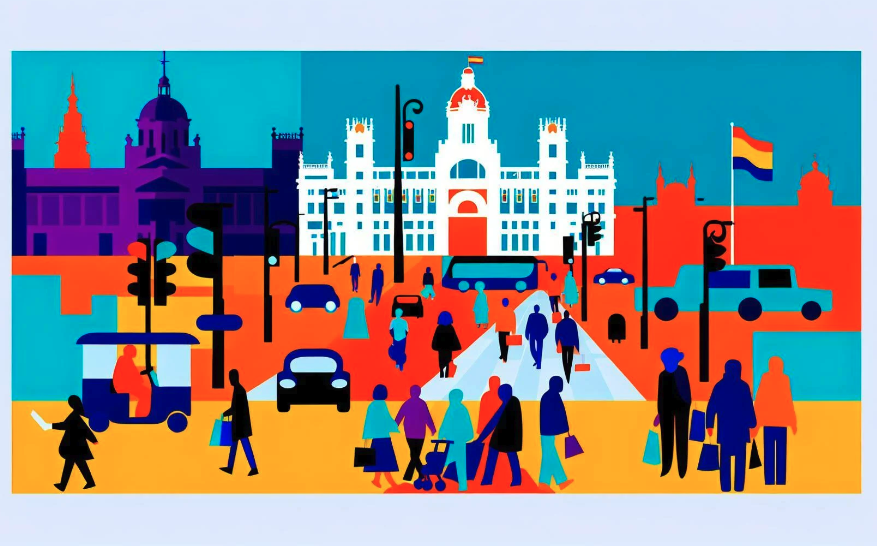. .
BLOG
AI Revolution in Fashion - 5 Trends and Applications of 2024

In 2024, the fashion industry is entering an era of AI-driven innovation, a world where style and technology merge in surprisingly creative ways. Imagine walking into a virtual store where AI welcomes you, suggesting clothes that perfectly fit your style and measurements, thanks to sophisticated virtual try-on and augmented reality technologies. In this futuristic universe, designers rely on AI systems that analyze trends and preferences to create collections that resonate with the expectations of the most demanding consumers. The supply chain, managed by intelligent algorithms, evolves into a model of efficiency and sustainability, while chatbots and virtual assistants offer an unparalleled customer service experience. And it doesn’t stop there: AI is reinventing influencer marketing and visual search, creating an ecosystem where every interaction is personalized, every choice is optimized, and every trend is precisely anticipated. This is the new face of fashion, a constantly evolving sector, where AI innovation is not just a trend, but the key to a more dynamic, sustainable and personalized future.
Today, on the LFM blog we are dealing with these very trends and trying to delve deeper into them to understand what will increasingly drive the transformation in this sector.
Trend 1: The Virtual Try-On Powered by Artificial Intelligence
In 2024, AI-powered virtual try-on technology revolutionized the fashion shopping experience. This innovation uses augmented reality to allow customers to virtually try on clothes and accessories.
With augmented reality, customers can see how clothes fit and look on their bodies without having to physically try them on. This technology offers a more engaging and personalized shopping experience, while reducing the need for returns due to size or style issues.
This development not only improves the shopping experience for customers, but also offers significant benefits to retailers. Fewer returns leads to less wasted resources and greater operational efficiency. Additionally, the virtual try-on experience encourages exploration and experimentation, potentially increasing sales and customer loyalty.
This virtual try-on technology could evolve further with the integration of more advanced features, such as AI-based personalization that takes into account individual customer preferences or suggests style matches. This approach opens up new possibilities for an even more personalized and interactive shopping experience.

One company that has embraced this technology to date is ZARA. Zara’s virtual try-on experience, through its augmented reality app, follows an intuitive and engaging path. Customers begin by downloading the app, which allows them to view virtual models wearing the selected clothes. This process happens in real time, giving customers the ability to see the items from different angles and contexts. The goal is to provide a personalized shopping experience that goes beyond the limitations of traditional online shopping, making the purchase more interactive and informative. Zara’s virtual try-on experience, through its augmented reality app, follows an intuitive and engaging path. Customers begin by downloading the app, which allows them to view virtual models wearing the selected clothes. This process happens in real time, giving customers the ability to see the items from different angles and contexts. The goal is to provide a personalized shopping experience that goes beyond the limitations of traditional online shopping, making the purchase more interactive and informative.

Trend 2: AI-Driven Fashion Design
The use of artificial intelligence (AI) in fashion design, as practiced by innovative brands like Stitch Fix , represents a true revolution in the industry. This process is divided into several key phases, each of which harnesses the power of AI to optimize and personalize the fashion experience.

Phase 1: Data Collection and Analysis
The first step is to collect a large set of data, including current fashion trends, customer preferences, product feedback, and historical sales data. Using sophisticated machine learning and data mining techniques, AI analyzes this data to identify emerging patterns and trends.
Phase 2: Understanding Customer Preferences
AI takes a deep dive into individual customer preferences based on previous purchases, online interactions, and feedback. This allows for detailed customer profiles that help designers better understand what consumers really want.
Phase 3: Design Generation
Using the insights gained, AI algorithms generate design proposals. These can range from subtle tweaks to existing styles to entirely new concepts. AI can suggest variations in color, fabrics, styles, and cuts, creating designs that fit market trends and consumer preferences.
Phase 4: Prototyping and Feedback
The designs proposed by the AI are then transformed into digital prototypes. These can be evaluated internally or presented to a select group of customers for feedback. The AI analyzes the reactions and comments to further refine the designs.
Phase 5: Production and Marketing
Once designs are finalized, they are fed into the production line. AI can also assist in demand forecasting and inventory management, ensuring that production is aligned with sales expectations.
Phase 6: Continuous Learning
AI doesn’t stop at commercialization. It continues to collect data on how products perform in the market, learning from successes and failures to improve future design and manufacturing cycles.
Trend 3: AI-Powered Supply Chain Management
Another trend confirmed in 2024 is the use of AI in the management of the so-called supply chain. This new trend is increasingly establishing itself in the fashion industry, with brands like Adidas leading this revolution. Adidas, in fact, uses AI to optimize inventory management and logistics , improving operational efficiency and reducing waste.
This technology allows them to predict consumer demand, automate inventory management, and optimize delivery routes, resulting in leaner, more eco-friendly operations. Other brands are following this trend, adopting AI solutions to improve their supply chains.
Trend 4 AI-Enabled Customer Service
The implementation of artificial intelligence (AI)-based chatbots in customer service, as demonstrated by brands like H&M, is revolutionizing the way fashion brands interact with their customers. These AI systems, which combine advanced technologies and a user-friendly interface, offer faster, more efficient and personalized customer service.
AI chatbots have become an essential tool for fashion brands looking to improve the customer experience. Acting as virtual assistants, these chatbots can handle a variety of customer requests, from assisting with online orders to providing information about products and promotions.
These AI systems use natural language processing (NLP) to interpret and respond to customer queries in a conversational manner. Customers can interact with chatbots via text messages on websites, mobile apps, or through social media platforms. In fact, using AI chatbots significantly improves the customer service experience by providing immediate and personalized responses. Customers enjoy greater convenience by being able to get 24/7 support without long waits. For businesses, chatbots provide efficient support and reduce the workload on support staff, allowing them to focus on more complex issues.
In this landscape, H&M is certainly an example of a brand that has successfully implemented AI chatbots in its customer service. These chatbots not only handle basic inquiries such as order information and product availability, but also offer personalized recommendations based on customers’ preferences and purchase history. The integration of AI chatbots has shown a significant improvement in customer satisfaction. Quick and personalized responses, continuous availability, and the ability to handle a high volume of requests have made customer service more effective and appreciated.
Trend 5 AI in influencer marketing
Artificial intelligence is transforming influencer marketing in the fashion world too, let’s look at some aspects together.
Influencer Selection : AI analyzes influencers’ content and their follower demographics, ensuring they match with your target audience, going beyond simple follower counting. This approach emphasizes quality of engagement over quantity.
Pricing : AI tools like Inzpire Me and Influencer Marketing Hub help determine fair compensation for influencers, based on various factors such as reach and performance. This ensures a more accurate and fair investment for collaborations.
- Identify fraudulent engagements: It is estimated that close to 55% of Instagram influencers were involved in some form of “tweaking” to increase their follower count in 2020. AI comes to our aid in this regard and helps us effectively track fake comments on posts, identify sudden spikes in followers and therefore exclude those “tweaked” influencers from the corporate investment landscape or at least offer compensation appropriate to the real and not fictitious numbers.
- Calculate campaign metrics and ROI
Determining ROI in influencer marketing is not always easy because there are not always quantitative aspects such as lead generation to calculate. The return on investment can take the form of an increase in brand image or brand awareness. AI helps us evaluate shifts in consumer sentiment before and after a campaign to see if brand image has improved.
Additionally, AI tools can provide valuable insights into areas for improvement in the campaign. This helps both you and the influencer improve your marketing strategy for future campaigns.
These are some of the aspects, we could mention others such as the increasing tendency to opt for models generated by artificial intelligence. We will leave further insights on this topic to the next posts, so stay tuned!
Recent posts
- All Post
- Area manager
- Best Employee
- Business Intelligence
- Education
- Eventi
- Intelligenza artificiale
- LFM University
- Metaverso
- Points of sales
- Retail
- Sponsorship
- Tour Operator




